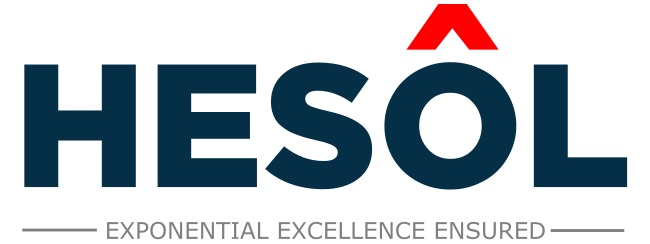- November 6, 2018
- Posted by: Hesol Consulting
- Categories: Logistics, Supply Chain

Though E-Commerce (Online Retail) seems like a great success story, the hard truth is there is a long hard way ahead for this Industry to maintain the growth trend and scale up. The only way the E-Commerce Industry can scale up faster is by shifting gears and focusing more on the OMNI Channel Strategy and quickly getting adapted to it.
Current E-Commerce Industry Performance:
The current E-Commerce (Online Retail) is estimated at a market size of around 39 Billion US $ as of 2017.
If we evaluate the growth trend, the industry has majorly dependent on the category-wise growth only and have never gone to the roots of India.
E-Commerce has not yet reached the nook and corners of India. If we consider the Overall retail pie of India, it is estimated at a market size of around 750 Billion US $ as of 2017.
The Online retail has a contribution of just 6% to the Overall retail
All the intense fight between the India’s top E-Commerce portals are still within this meagre 6% only. Each player claims themselves as the winner, but I would say no one is a Winner yet when the lion’s share is still with the offline retail.
The Speed Breakers of the Indian E-Commerce Industry:
There are various reasons that hinders the growth of the most potential Indian E-Commerce Industry. I’m just listing the top 3 contributors who has the major negative impact on the future of the E-Commerce Industry –
- Working more and more with Downstream Supply Chain Partners (Retailers) as sellers leading to inability to maintain cost advantage
- Logistics Cost % to Sale of E-Commerce varies between whooping 12% to 25% across various categories where-in offline Retail operates at around 3-7%. This huge leakage is mainly due to the inefficiency in consolidation at each node of supply chain and huge returns from the Customers clubbed with insufficient Reverse logistics infrastructure
- E-Commerce Industry has efficiently touched just 3500+ Pincodes out of the 30,000+ Pincodes in India
OMNI Channel Strategy:
Now the only Trump card with us is the OMNI Channel Strategy where-in the E-Commerce Industry (Online Retail) can piggy back on the Infra structure of the offline retail to penetrate faster.
“Rather than Online Vs Offline, Online + Offline is the Smart Business Strategy to be successful”
Unfortunately, though many players claim to have mastered the OMNI Channel, the reality is the offline and online supply chains, function as silos within the organization. We call that as Multi-Channel rather than OMNI Channel. So, what we fail to achieve is the seamless integration of the online and offline supply chain to emerge as a OMNI channel supply chain. The root of this misalignment is the lapse in planning for the OMNI channel and the right technology to drive OMNI channel supply chain.
OMNI Channel Secret Recipe:
I have worked on OMNI Channel Implementations across multiple projects and the game plan is simple:
- OMNI Channel’s success relies on how efficiently the Supply Chain Network is designed to achieve the Service fills of the offline and online customers
- Efficiently utilize the Resources to the Brim and seamlessly utilize resources for the Online and Offline Fulfillment
- Leverage the comfort of Online Supply Chain & widespread reach of Offline Supply Chain to scale up in great pace
The OMNI Channel can bring down the overall supply chain costs of the Online retailers by 5-10%. This we can see on the P&L real quick;
Not just that, the OMNI channel brings out efficiency from the existing offline infrastructure as well by using the resources to the brim.
MYTHS in OMNI Channel:
Myth 1: Most of the organizations are so nervous about adapting to OMNI Channel and they think for OMNI Channel Implementation we need to change all the infra, systems and processes. It is a Myth;
In OMNI Channel we use the existing infra to full potential and all the systems we use today are scalable to an OMNI supply chain and nothing goes waste
Myth 2: “OMNI Channel is Bad and specializing in one channel is the Best strategy”
This may sound good, but the organization will be left far behind in the race since Online to reach Billion people will take ages and offline can never match the comfort of online buying.
Myth 3: OMNI Channel confuses the Customer is the biggest myth of all;
The truth is, Customer gets multiple options to place orders and how the fulfillment is managed is up to the organization to plan and execute. Therefore, OMNI channel is a boon to the customer and the organization who masters the OMNI supply chain will have a competitive edge.
As a concluding, it is very evident that OMNI channel is the only effective way to bridge the gaps of the current E-Commerce industry. On top of that, a value proposition of bottom-line savings of around 5-10% on the supply chain cost to sale makes the OMNI channel a Gold Mine which is yet to tapped.
Seamless Integration of Online + Offline would be the Business Mantra each Organization should be working towards to be the market leader!
About the Author (Linkedin | Instagram | Facebook)
Alvis Lazarus is a Supply Chain Consultant at Hesol Consulting, an Award Wining Supply Chain & Management Consulting firm from India. Senior Leader in Supply Chain & Logistics with almost two decades of SCM hands-on experience in devising Country Level and Global Supply chain strategies, Solutions design and spear heading Supply chain Implementation across 10+ Countries. He holds the distinction of driving Supply Chain Solution Design & Implementation across various industries such as Automotive, FMCG, Pharma, Health Care, F&B, Agriculture and E-Commerce. Global Exposure on handling Operations and leading Supply chain, Warehousing & Logistics Projects across EMEA, APAC & AMERICAS Regions.


Please visit http://www.hesol.co.in/casestudies to read OMNI Channel implementation case studies.
– Team Hesol